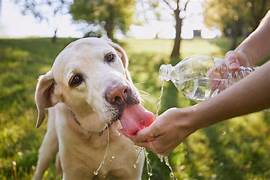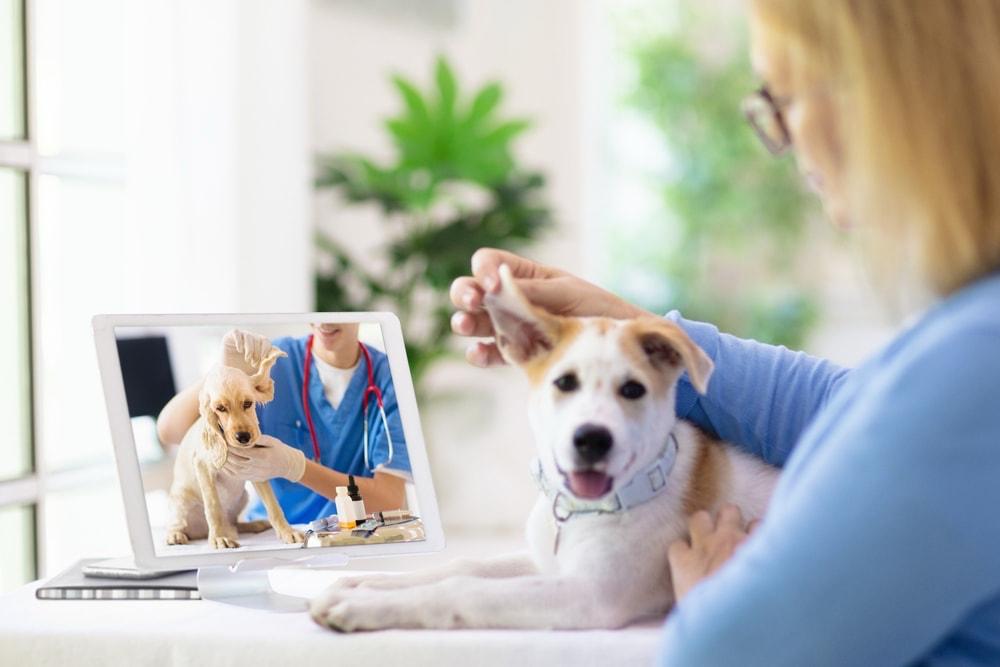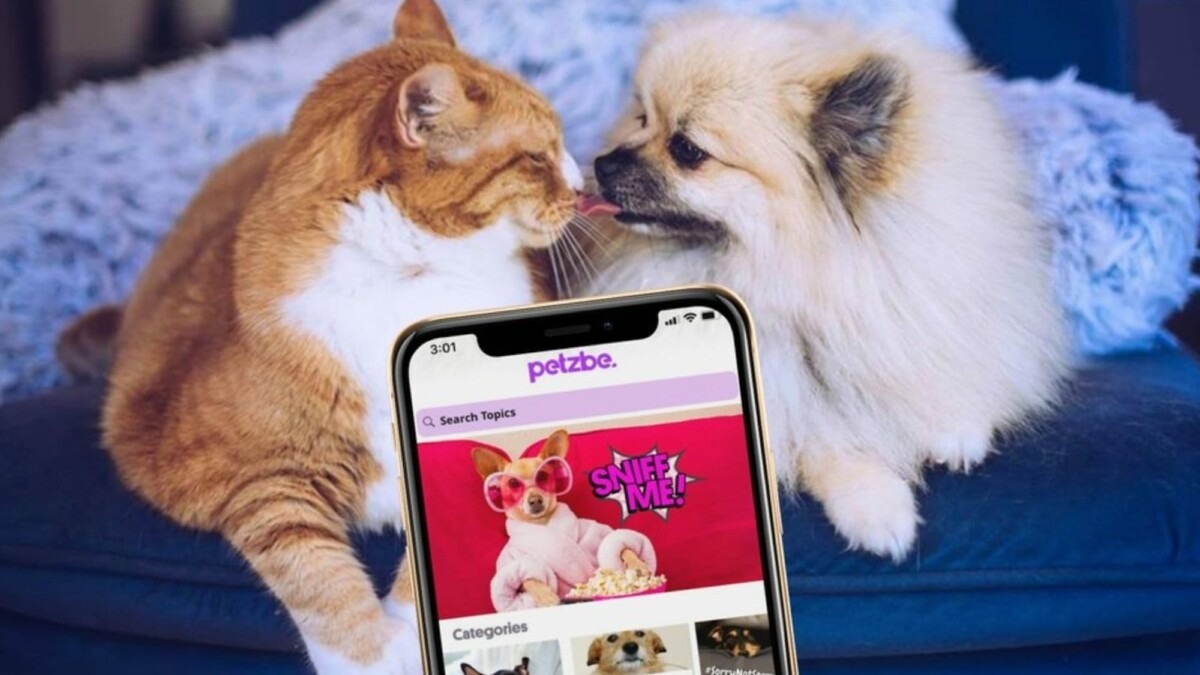
Hydration Tips: Getting Your Pet to Drink More Water.
Ensuring your pet stays well-hydrated is vital for their health, affecting everything from kidney function to energy levels. Many pets, especially cats, don’t drink enough water on their own. This article explores creative, effective strategies to increase water intake, recognize signs of dehydration, and tailor hydration plans based on species, age, diet, and medical conditions.
🐶 Pet Star
54 min read · 3, Jul 2025

Introduction: Why Hydration is Critical for Pets
Just like humans, pets rely on water to regulate body temperature, support metabolism, digest food, and eliminate waste. Water makes up around 60-80% of your pet’s body, depending on age, species, and health. Dehydration can lead to serious health problems such as kidney disease, urinary tract infections, and heatstroke.
Pets typically need about 1 ounce of water per pound of body weight each day, although this can vary depending on diet, activity level, and environment. Dry kibble-fed pets need more water intake than those eating wet or raw diets, which contain higher moisture content.
Despite its importance, many pets don’t drink enough water, especially cats, who naturally have a low thirst drive. Dogs can also become dehydrated during travel, illness, or hot weather. That’s why it's essential for pet parents to proactively monitor and encourage proper hydration.
Section 1: Understanding Your Pet's Hydration Needs
Species-Specific Hydration Needs
- Cats: Descended from desert-dwelling ancestors, cats have a weak thirst instinct. They rely heavily on moisture in their food. A diet of only dry food puts them at greater risk of dehydration and kidney problems.
- Dogs: Dogs are more likely to drink regularly but may ignore water when distracted, anxious, or unwell.
- Small mammals (rabbits, guinea pigs, hamsters): These animals need frequent access to clean water and can suffer rapid dehydration if water is unavailable even for a short period.
Signs of Dehydration in Pets
- Lethargy
- Dry nose or gums
- Loss of skin elasticity (tent test)
- Sunken eyes
- Panting (in cats is a serious concern)
- Decreased urine output or dark yellow urine
Emergency Note: If dehydration is suspected, especially during hot weather or illness, consult a veterinarian immediately. Dehydration can progress quickly and become life-threatening.
Section 2: Creative Ways to Encourage Water Intake
1. Fresh and Clean Water Access
Pets are sensitive to the taste and smell of water. Ensure:
- Bowls are cleaned daily to remove slime and bacteria
- Water is changed 1-2 times a day
- Use stainless steel, ceramic, or glass bowls rather than plastic, which can harbor odors and bacteria
2. Use Multiple Water Stations
Place several water bowls in different rooms and areas your pet frequents. This encourages spontaneous drinking and removes barriers like territorial pets or inaccessible locations.
3. Try Water Fountains
Many cats and even some dogs are attracted to moving water. Pet water fountains filter and circulate water, keeping it fresh and appealing. Flowing water mimics natural streams and appeals to a cat’s instincts.
4. Flavor the Water
A dash of low-sodium chicken broth, tuna juice (from water-packed tuna), or bone broth can encourage drinking. Ensure no garlic, onion, or high sodium content. Freeze broth into ice cubes and drop them into the bowl for extra fun.
5. Add Moisture to Food
- Switch from dry kibble to wet food, which contains about 70-80% moisture.
- Mix water or broth into dry kibble.
- Offer hydrating treats like cucumber slices or watermelon (remove seeds and rind).
6. Use Ice Cubes or “Pet Popsicles”
Some pets enjoy licking or playing with ice cubes. You can also make pet-safe popsicles by freezing broth or pureed meat/vegetables in silicone molds.
7. Keep Water at a Comfortable Temperature
Some pets prefer room temperature water, others like it cool. Offer both if unsure. During summer, provide cool water in shaded areas and indoors.
8. Encourage Drinking After Activity
After walks, playtime, or training, offer water immediately. Positive reinforcement can help pets associate drinking with reward and fun.
9. Invest in Hydration-Boosting Products
- Hydration supplements (electrolyte-enhanced) for pets are available, especially useful during illness or travel.
- Oral hydration gels can be prescribed by vets for severely dehydrated pets.
Section 3: Hydration Tips for Cats (Tricky Drinkers)
Cats are particularly finicky about their drinking environment. Try these cat-specific tricks:
- Avoid placing water bowls near litter boxes or food bowls.
- Use wide, shallow bowls to avoid whisker stress.
- Try different materials (ceramic, stainless steel) or running water fountains.
- Some cats like water dripping from a faucet—leave a slow trickle if safe and supervised.
- Offer water-rich treats like Churu or homemade tuna water.
Section 4: Hydration for Dogs (The Active Drinkers)
Dogs are often more eager to drink, but their hydration needs change based on:
- Exercise: Always carry water and a collapsible bowl during walks or hikes.
- Weather: Hot or humid climates increase fluid needs; offer water frequently.
- Health: Dogs with kidney disease, diabetes, or vomiting need veterinary-monitored hydration strategies.
Helpful dog-specific practices:
- Introduce drinking breaks during play sessions.
- Monitor bowl levels daily—measure if you suspect decreased intake.
- Ensure no barriers like dominant pets blocking water access.
Section 5: Monitoring Hydration in Your Pet
Daily Tracking
Use a marked water bowl or a measuring cup to track daily water consumption. This is especially useful for:
- Senior pets
- Pets with chronic illnesses
- After surgery or medication
Weigh Your Pet’s Food
If you’re feeding wet food, measure how much water it provides. For example, 100g of wet food offers ~70ml of water.
Veterinary Guidance
If your pet consistently drinks too little—or too much (which can also signal disease like diabetes)—seek veterinary help. Diagnostic tests may be needed to assess kidney, liver, or metabolic function.
Proper hydration is a cornerstone of pet health, yet it is often underestimated by pet owners who may not realize how essential water is for their animals' daily physiological functioning, from temperature regulation and digestion to waste elimination and joint lubrication; in fact, water comprises up to 80% of a healthy pet’s body, and without sufficient intake, even mild dehydration can lead to serious consequences such as kidney disease, urinary tract infections, constipation, and heatstroke, especially during warmer months or when a pet is unwell, older, or fed a dry-food-only diet; dogs and cats, though both popular pets, have distinct hydration behaviors—dogs usually exhibit a stronger thirst response and are more likely to drink when they need to, whereas cats, with their evolutionary roots in arid desert environments, often fail to show signs of thirst even when they are mildly dehydrated, making it imperative for their guardians to proactively ensure they’re getting enough fluids through food and other methods, especially since many cats are fed exclusively on kibble, which contains less than 10% moisture; in general, veterinarians recommend pets consume approximately 1 ounce of water per pound of body weight daily, though this amount may vary depending on climate, age, diet, and activity level, meaning a 20-pound dog should ideally drink around 20 ounces, but if that dog is fed dry food in a hot climate and is active, the requirement may be significantly higher, and failing to meet those needs puts stress on organs like the kidneys, potentially accelerating chronic disease over time, particularly in aging pets; one of the most effective strategies to boost hydration is offering multiple sources of water in different parts of the home, ensuring they are always clean and refilled with fresh water at least once a day, because pets are sensitive to stagnant or contaminated water, and some may even avoid bowls that carry residual soap smells or bacteria buildup—hence using stainless steel, ceramic, or glass bowls is preferred over plastic, which can harbor bacteria and odor over time; pet fountains are an increasingly popular tool for hydration, especially for cats, as the sound and movement of running water naturally attract them due to their instincts, and many find them more appealing than still water bowls, making them a worthwhile investment for households with picky drinkers; for dogs, encouraging hydration is often more straightforward but still requires attention, particularly during and after exercise, when dogs may pant heavily and lose fluids rapidly—so it’s important to offer water breaks and carry portable water containers on walks, hikes, or travel; another proven technique is to flavor water with pet-safe additives such as low-sodium chicken broth or tuna juice (in moderation and without harmful ingredients like garlic or onion), which can entice pets to drink more due to the enhanced scent and taste, although such additives should be used cautiously and not as a complete replacement for plain water; similarly, feeding pets moisture-rich foods—such as canned wet food, gently cooked meals, or rehydrated freeze-dried or raw food—can greatly enhance daily water intake, as these options typically contain 70–80% water compared to dry kibble’s mere 8–12%, meaning a shift to wet food or even mixing warm water into dry meals can help hydrate pets without relying solely on their thirst instinct; adding water-rich treats like cucumbers, watermelon (seedless), and broth-based frozen cubes also introduces variety and hydration in a way that’s engaging for pets, especially during summer months when the risk of overheating is elevated; additionally, pet owners should be mindful of where they place water bowls—some cats, for instance, dislike drinking near their litter boxes or food bowls, preferring instead to have water in a quiet, low-traffic location, and some pets may develop aversions if their whiskers touch the side of deep or narrow bowls, a phenomenon known as whisker fatigue—hence using wide, shallow dishes can make a surprising difference; another practical approach is using behavioral encouragement, such as praising or rewarding pets when they drink water voluntarily or offering water after play sessions or walks, associating hydration with positive reinforcement; beyond these environmental and dietary changes, it’s vital for pet owners to monitor their animals' water intake over time—this can be done by using marked bowls or measuring the amount of water poured and leftover each day, which helps detect subtle changes in habits, and is particularly important for pets with health conditions such as kidney disease, diabetes, or urinary issues, where even a slight variation in hydration can signal the need for veterinary attention; pet parents should also be aware of the signs of dehydration, which include dry gums, sunken eyes, lethargy, excessive panting (especially in cats, where panting is not normal), and decreased skin elasticity, which can be tested by gently pulling up the skin over the shoulder—if it doesn’t snap back quickly, dehydration may be present and should be treated as a medical concern, with mild cases often resolved through oral rehydration while severe dehydration may require intravenous fluids at a veterinary clinic; it’s also critical to recognize that excessive thirst or urination can be just as concerning as lack of thirst, often signaling underlying conditions like diabetes mellitus, Cushing’s disease, or kidney failure, so any significant change in drinking behavior warrants a professional evaluation rather than assumptions or self-treatment; finally, some pets may benefit from veterinary-formulated electrolyte solutions or hydration gels, particularly during recovery from surgery, illness, or heat exhaustion, and these should only be used under veterinary guidance, but can be life-saving in situations where a pet cannot or will not drink adequately on their own; ultimately, ensuring your pet remains hydrated is not simply about putting down a bowl of water—it’s about observing behavior, adapting their environment and diet, introducing enrichment, and being attentive to medical signals that may require intervention, because a well-hydrated pet is a healthy, energetic, and resilient companion, and the habits you build around hydration can prevent long-term disease, improve quality of life, and strengthen the bond between you and your animal, making this aspect of care just as crucial as feeding, grooming, or exercise in the overall framework of responsible pet ownership.
In continuation of understanding how hydration impacts our pets’ well-being, it’s important to emphasize that seasonal changes, age, and medical conditions all influence your pet's water requirements, and pet parents must tailor hydration strategies accordingly to prevent dehydration or overhydration, both of which can cause significant health disturbances; for instance, senior pets often experience a decreased sense of thirst along with a natural decline in kidney function, making them more vulnerable to chronic dehydration, while young kittens and puppies are small and metabolically active, meaning even minor fluid losses due to vomiting, diarrhea, or heat can rapidly become dangerous, so hydration strategies must be age-appropriate and, in some cases, include veterinary-prescribed electrolyte supplements to maintain fluid balance; pets with chronic illnesses like diabetes, Cushing’s syndrome, or chronic kidney disease (CKD) also demand extra monitoring, as their conditions often involve increased thirst and urination, making it crucial to ensure their water intake keeps pace with fluid loss; many vets recommend subcutaneous fluid administration at home for CKD patients, and hydration-supportive diets may include therapeutic wet foods designed to aid kidney health by lowering phosphorus and boosting moisture; similarly, pets recovering from surgery, infection, or digestive upset may have decreased appetites or energy, but maintaining hydration is essential to healing and supporting medication absorption and kidney function—thus, in such cases, even spoon-feeding water, offering broths, or using pet-safe syringes can be helpful to encourage slow, steady intake when they are unwilling to drink on their own; for pets who are averse to drinking still water or simply uninterested, enrichment-based hydration techniques can play a key role—offering ice cubes made from broth or water with a hint of tuna, rotating the shape and size of bowls, experimenting with chilled or room-temperature water, and even using puzzle feeders that integrate hydration by hiding frozen treats or hydrating snacks can turn drinking into an interactive experience that piques curiosity and encourages natural consumption; dogs, in particular, may enjoy chewing on frozen carrots, broth-based ice treats, or licking frozen peanut butter mixed with water (unsweetened, xylitol-free) from lick mats, which stimulate saliva production and indirectly boost water consumption; environmental adjustments also significantly influence hydration habits—placing water bowls in temperature-controlled areas, away from direct sunlight and high-traffic zones, ensures water stays clean and appealing, while pets with physical limitations such as arthritis or mobility impairments may require elevated bowls or special access to ensure they can reach water without discomfort, which could otherwise cause them to avoid drinking altogether; multi-pet households introduce their own hydration challenges—dominant pets may guard water bowls or prevent others from drinking, especially in cats, who are naturally territorial, so it’s advisable to have multiple bowls or fountains across different rooms to ensure equal access and reduce competition or anxiety; for pet owners who travel frequently or keep pets in crates or kennels during the day, portable water dispensers, no-spill travel bowls, or hydration pouches can provide clean access to water throughout the day, while ensuring that bowls are emptied and cleaned at least once daily reduces the chances of bacteria buildup, which could not only discourage drinking but also lead to illness; water cleanliness cannot be overstated—pets are often turned off by water that smells odd, contains debris, or sits in a dirty bowl with biofilm buildup, so routine sanitizing with pet-safe soap and a rinse with hot water is necessary, and filtration systems in pet water fountains should be changed as recommended, since clogged filters can trap hair, food particles, and bacteria, making the fountain less effective and even hazardous; when it comes to cats, who are notoriously finicky, experimenting with different drinking styles can unlock preferences that lead to more regular water intake—some cats prefer narrow streams of water, while others may be intrigued by dripping faucets or water run across a tiled floor or bath; incorporating their natural instincts and preferences—such as elevating bowls, placing them in quiet corners, or using wide, whisker-friendly bowls—can result in improved hydration without force; likewise, some cats respond positively to running water sounds, and there are automated fountains with adjustable flow settings to mimic gentle streams or trickles, which can become a behavioral enrichment activity in themselves, stimulating both curiosity and hydration; hydration in cats also ties directly into urinary tract health—adequate water intake dilutes urine and reduces the risk of crystal formation or urinary tract infections, both of which are common in neutered male cats and can lead to dangerous blockages if left untreated, making wet food and increased fluid intake critical to prevention; in dogs, hydration supports everything from thermoregulation to digestive lubrication and even oral health—dry mouths are more prone to developing dental disease, which in turn may discourage eating or drinking, creating a vicious cycle, so hydration also indirectly supports other areas of health by maintaining moist mucous membranes and adequate saliva flow; another point to consider is behavioral training: for dogs, hydration can be integrated into routines, such as offering water after obedience commands, walks, grooming sessions, or meals, and in households where water bowls are neglected or placed in unappealing locations, dogs may “hold out” until desperate, so it's crucial that access is consistent and appealing; some pets may even develop phobias around certain bowls (due to loud clinking, slipping, or reflections in shiny surfaces), and in those cases, switching to silicone or ceramic bowls, placing them on anti-slip mats, and testing various heights can make a substantial difference; digital hydration monitors and pet water dispensers now exist that track how much your pet drinks each day, offering detailed insights into hydration trends—this is particularly valuable for pets on medication, those undergoing treatment, or those with chronic disease, where subtle deviations may signal the need for vet consultation before visible symptoms emerge; in terms of hydration myths, many pet parents believe pets will “drink when thirsty,” but this assumption doesn’t always hold true—especially in cats and in older or sick animals—so offering creative, palatable, and accessible hydration options helps mitigate the risk of underconsumption; in some cases, cats and dogs may even prefer running water outdoors, such as from garden hoses or rain puddles, but these sources can be contaminated with parasites or chemicals, so clean, indoor water options should always be the primary resource; above all, staying hydrated significantly boosts a pet’s immune system, cognitive function, and recovery time from stress or illness, and helps to prevent chronic illnesses from progressing, all of which contribute to a longer and more vibrant life; as such, pet parents must take a proactive, observant, and adaptive role in managing their animals’ hydration—not just assuming they’re drinking, but encouraging it through engaging strategies, monitoring intake when necessary, and responding promptly to any signs of imbalance, because when a pet is well-hydrated, every system in their body—from the kidneys and heart to the skin and coat—functions optimally, resulting in better health, energy, comfort, and joy for both the animal and the human companions who love them dearly.
Conclusion
Water is the foundation of your pet’s health. Even mild dehydration can affect energy, digestion, and long-term organ function. Many pets, particularly cats, do not naturally consume enough water, especially if fed dry diets. That’s why proactive hydration strategies are critical.
You can improve your pet’s hydration by offering multiple clean water sources, using water fountains, flavoring water safely, feeding moisture-rich foods, and creating drinking routines after activity or meals. Keep a close eye on water intake, especially during hot weather or illness.
Summary Points:
- Hydration supports vital organs, digestion, and thermoregulation.
- Cats and dry-fed pets are most at risk of chronic dehydration.
- Use diverse, creative methods: water fountains, broths, and wet food.
- Monitor for signs of dehydration and consult a vet if needed.
Q&A Section
Q1: - How much water should my pet drink each day?
Ans: - A general rule is about 1 ounce of water per pound of body weight daily, though this varies based on species, diet, and activity.
Q2: - How can I tell if my pet is dehydrated?
Ans: - Signs include lethargy, dry gums, sunken eyes, panting, decreased urination, and loss of skin elasticity.
Q3: - Why doesn’t my cat drink water often?
Ans: - Cats have a naturally low thirst drive due to their desert ancestry. They rely more on food for hydration, especially wet food.
Q4: - What’s the best way to get my pet to drink more?
Ans: - Offer clean water in multiple spots, try fountains, flavor water with broth, and feed moisture-rich wet food.
Q5: - Can flavored water harm my pet?
Ans: - Not if done correctly. Use only pet-safe, low-sodium broth without garlic or onion. Avoid sweeteners or artificial additives.
Similar Articles
Find more relatable content in similar Articles

Composting Pet Waste: A Greener Way to Clean Up...
As pet ownership continues to .. Read More

Virtual Vet Visits: Are Online Consultations Reliable?..
As pet healthcare embraces dig.. Read More

Social Media for Pets: Turning Your Pet into a Digital..
From playful puppies to charis.. Read More

Pets and Mental Health: The Science Behind Emotional H..
Discover the profound impact o.. Read More
Explore Other Categories
© 2024 Copyrights by rPets. All Rights Reserved.